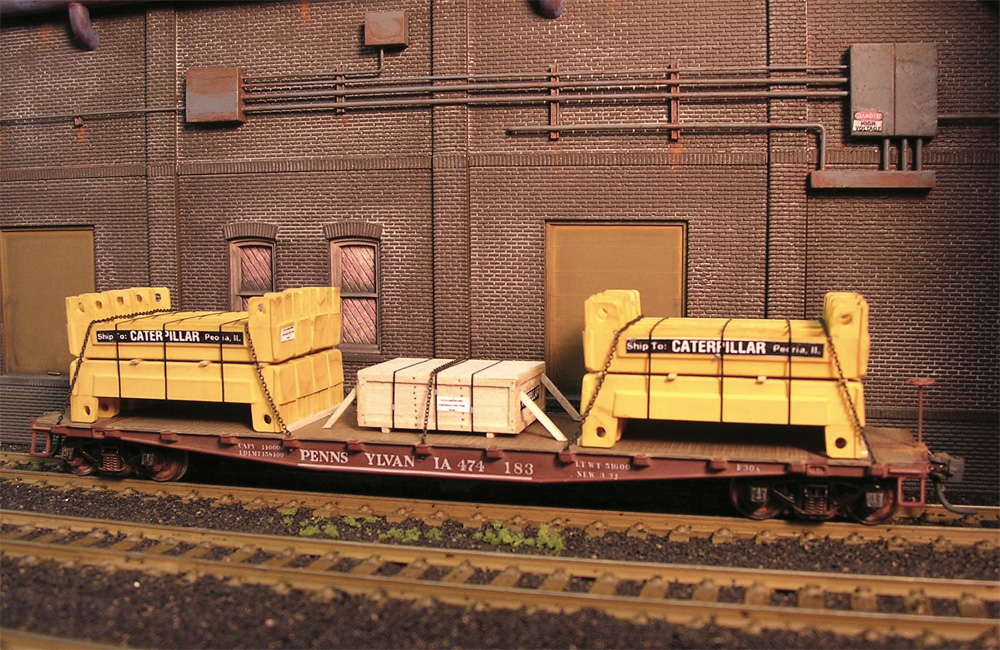
Q: I’m putting together some loads for flatbed and open gondola cars consisting of objects like pipe, wood, basically long straight pieces about half a car length in length. What would I use to model steel strapping to hold the loads together? I work in HO scale. — Rich Bond
A: The easiest and best-looking solution we have come across to model steel strapping has to be graphic tape, also known as chart tape. This is a roll of very thin adhesive tape used by draftsmen and newspaper paste-up artists in the days before computer graphics. It comes in plastic or crepe (you want plastic), in multiple colors (you want black), and with or without a clear background (you want without). Look for it in your local office, art, or drafting-supply store, or online. One roll can band dozens of flatcar or gondola loads. Chartpak is one well-known brand.
For HO scale, get 1/64” thickness, which comes out in HO scale to about 1-3/8” wide. This is wider than the steel banding on the prototype (typically 1/2″ or 3/4″), but that’s generally the thinnest you can get that doesn’t have a wider clear backing to hold it together. Wrap it around your load, trim it so there’s a very small overlap, then apply a dot of silver paint to the overlap area to represent the clip that holds the strapping together. Modeler Rich Newmiller gave us that tip in his contribution to Jim Hediger’s “Workshop” column in our February 2004 issue.
Steel strapping has been used since the 1910s to hold together wood crates, bales of cotton and wool, lumber, pipes, bricks, and more. Earlier loads might have been secured with rope, cable, chain, or wood cribbing. If you’re modeling the diesel era, nylon strapping came about in the 1960s. That might be a use for those other colors of graphic tape.
Send us your questions
Have a question about modeling, operation, or prototype railroads? Send it to us at AskTrains@Trains.com. Be sure to put “Ask MR” in the subject.







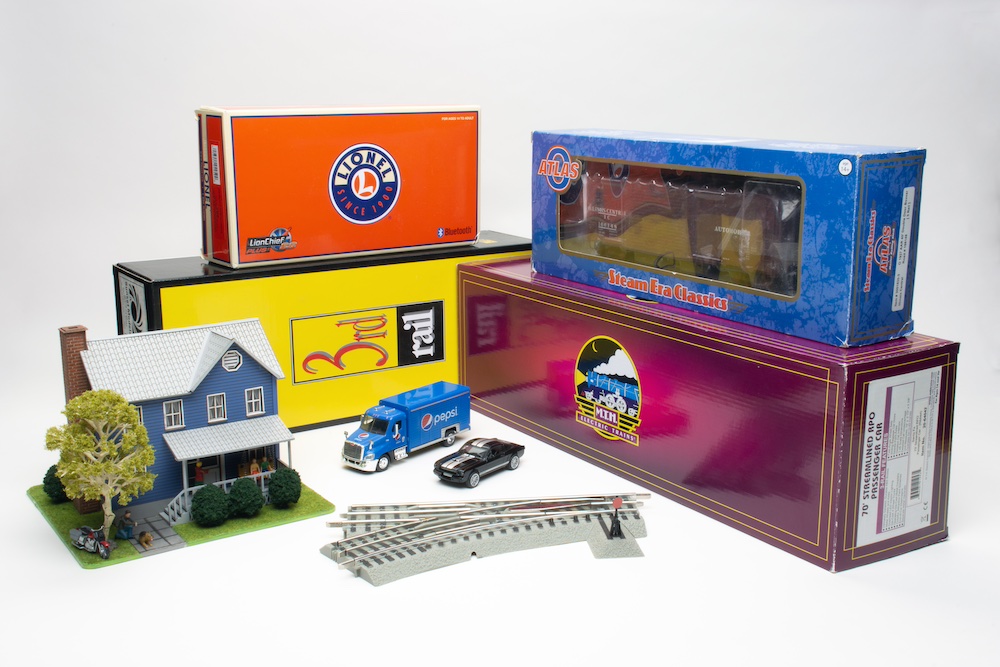
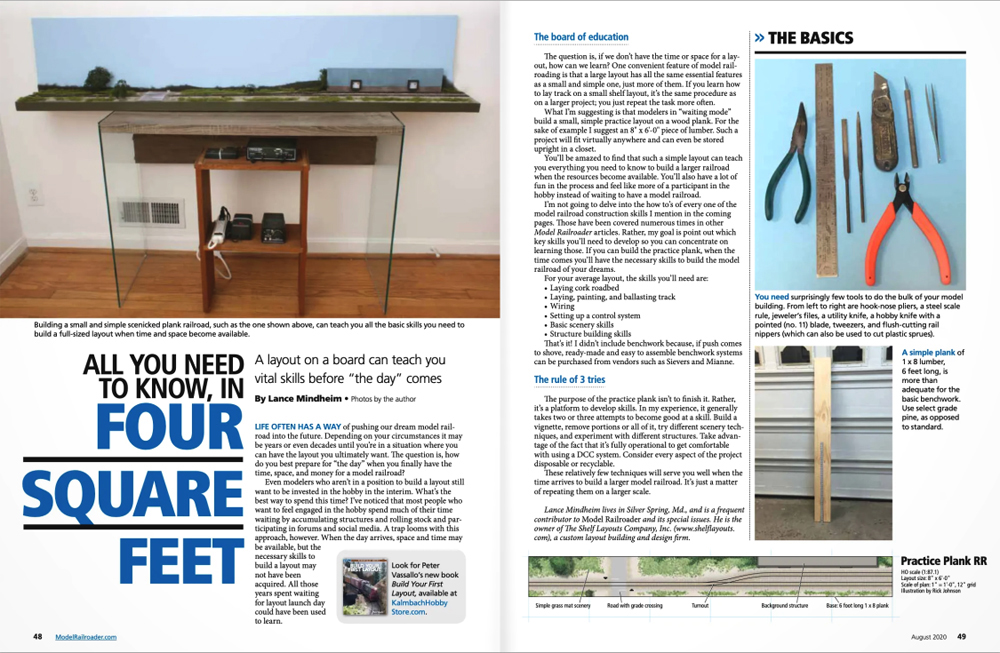
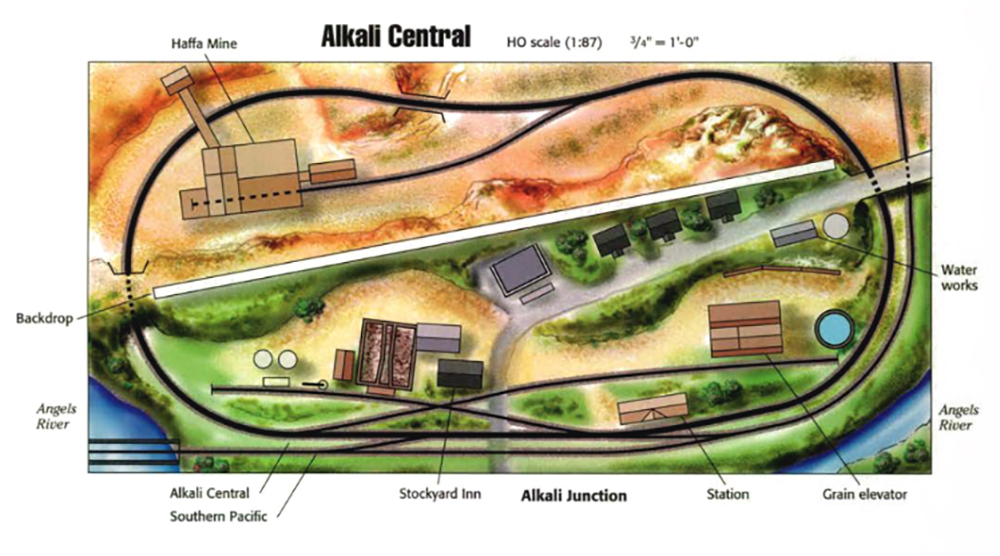

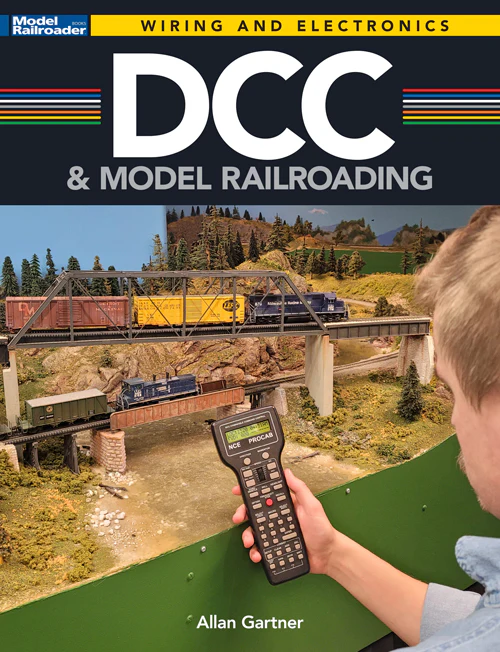

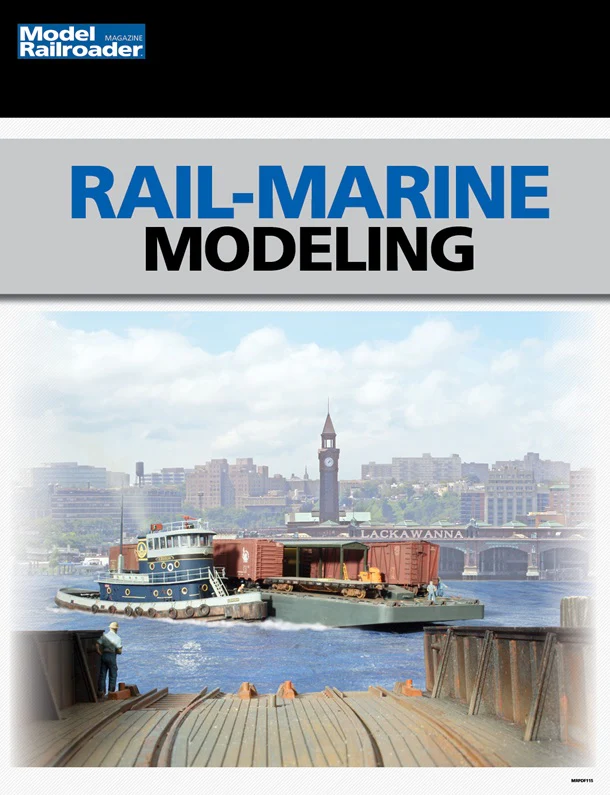

Thank you for a very timely reminder of something I knew but have since long forgot about. Care must be taken to properly secure the bitter end to the car side and don’t be sad if after a time it comes loose. Just remove any dust and grime from the car’s anchor point before applying the tape. The beauty of Chart-Pak type tape is it is relatively cheap and easy to work with and super simple to renew or replace when needed. And it does not tend to droop or form a catenary like thread or scale chain. Again, thank you for this tip.
Thanks for the silver paint “clip” tip!!